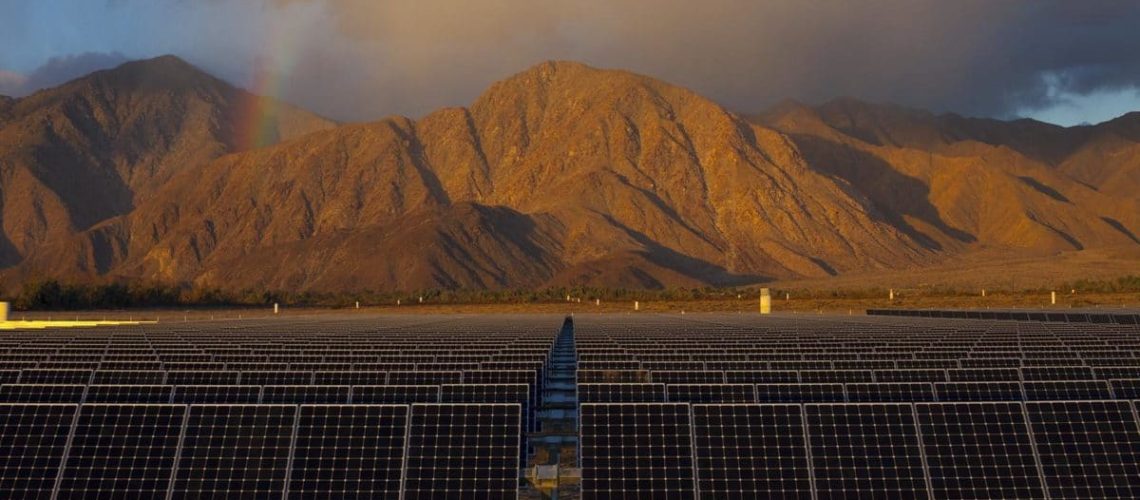A study conducted by researchers at Lawrence Berkeley National Laboratory shows that microgrids with solar-plus-storage systems can keep the average levelized cost of energy (LCOE) and annual public safety power shutoffs below 30 cents per kWh and 2 to 3% of annual energy demand, respectively.
Recent studies have proposed using solar-plus-storage microgrids to minimize public safety concerns from power shutoffs (PSPS) during the wildfire season for communities located in wildland-urban interfaces, such as California and much of the West Coast.
A comprehensive assessment of microgrids had not been performed to evaluate the potential to enhance resilience for up to 46 million Americans living next to forests, or a wildland-urban interface, where wildfire risk is acute. To address this research gap, a study by the Lawrence Berkeley National Laboratory looked at a novel modeling framework and assessed the potential of solar and batteries for districts where power can be turned off based on wildfire warnings.
LBNL’s modeling framework consists of:
- Clustering algorithms that identify communities based on building footprint data, fire hazard severity, and renewable energy potential;
- A building simulation model to quantify the energy demand;
- An energy system optimization model to assist the microgrid.
LBNL defines a microgrid as a controllable and localized energy grid that can be disconnected from the regional grid and operate independently.
An optimization tool was introduced to model microgrids in forest-bordering regions, and subsequently, an assessment was performed focusing on seven localities in California with different climate conditions.
The study revealed that microgrids with solar-plus-storage systems can keep the average levelized cost of energy (LCOE) and annual public safety power shutoffs below 30 cents per kWh and 2 to 3% of annual energy demand, respectively. Californians pay about 25 cents per kWh on average for residential electricity.
“This is the first detailed, state-level study that’s looked at how clean energy microgrids can minimize outage impacts on vulnerable communities, and how much it would cost,” said Tianzhen Hong, a co-author and senior scientist at LBNL.
Additional findings include that renewable energy penetration can be kept at 60% or above of the annual energy demand while considering microgrids, which creates a more wholesome picture for solar plus battery systems to reduce the adverse impacts of wildfires and increase grid resiliency during seasonal patterns of increased wildfires.
The study notes that microgrids cannot completely eliminate the PSPS concern completely, as the LCOE and renewables curtailment become higher when attempting to eliminate public safety power shutoff completely.
A reduction in the cost of deploying energy storage systems is essential to achieving zero public safety shutoffs altogether, and further cost declines in storage technologies is anticipated in the coming years.
The LBNL study recommends solar-plus-storage microgrids for communities situated alongside wildfire risk areas of California to enhance energy infrastructure resiliency and to protect vulnerable residents.
More than 46 million Americans living in 70,000 individual communities are at risk for wildland-urban interface fires, the study reports. Such neighborhoods are created by population growth that pushes property development into wildfire-prone regions.
While utilities implement PSPS emergency power shut-offs on red flag warnings days, modern grid infrastructure upgrades are necessary to keep up with the increases of climate change occurrences and wildfires. At least five of the 20 most destructive California wildfires have been attributed to faulty power line problems, including the 2018 Camp Fire.
The immediate cut-off of power during wildfire season causes disproportional difficulties to disadvantaged communities with limited access to internet, mobility or medical systems.
“We’re really talking about equity here,” Hong said. “The technology can be really good, but at the end of the day, if people can’t afford it then nothing happens.” Under the Bipartisan Infrastructure Law and Inflation Reduction Act, federal support has been directed towards the type of community energy installations the study describes.
PG&E, a California utility provider previously at fault for wildfires spreading during the 2018 Camp Fire, recently introduced microgrids to support areas in its service territory surrounded by wildfires. Such microgrids operate in standalone mode during wildfire seasons, and supply electricity for consumers without being dependent on the grid. These microgrids also enable the integration of more dispatchable renewable energy sources with minimal impact on the grid.
The study first appeared in an April issue of Applied Energy, and was co-authored by Dasun Perera from Princeton University, Bingyu Zhao from TU Wien, Zhe Wang and Kenichi Soga from the Hong Kong University of Science and Technology.



